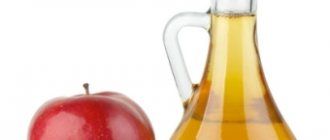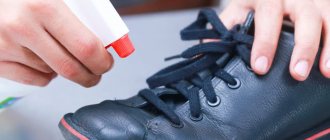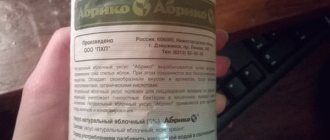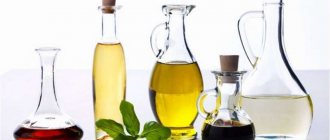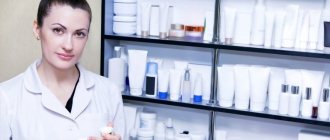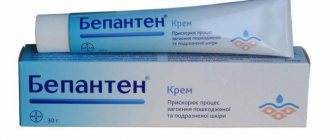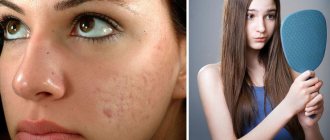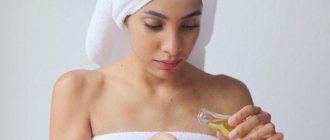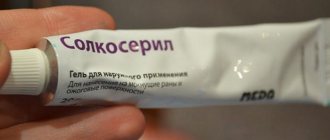What is peeling, what types does it come in?
Peeling is the removal of the top stratum corneum to improve the appearance of the skin. This is a popular procedure among cosmetologists. It can be done by hardware (laser grinding), mechanical (scrubbing) or chemical (acids).
The acid or chemical version of exfoliation is widely used due to its availability and ease of implementation. Depending on the depth of penetration of the active substance, peelings are:
- Superficial;
- Median;
- Deep.
The last 2 are performed only by highly accredited plastic surgeons and dermato-cosmetologists. Most masters perform superficial exfoliation.
It’s certainly nice to be in the hands of a professional. But many are stopped by the price of beauty services in beauty salons. If you don’t want to attribute 1.5-6 thousand rubles. in one session, consider doing a facial upgrade at home.
Is it possible to do peeling at home?
Only cosmetologists are in a hurry to prove that peelings cannot be done at home, since the popularization of home-procedures leaves such “specialists” without work. In fact, this is a simple operation and can be performed without much expense.
Almost every beauty brand produces care lines with acids, and every tenth produces peeling emulsions. Acid concentrates are not a budget pleasure (min. $15 per 50 ml bottle). They contain mono-acids or complexes: glycolic, lactic, ferulic, tartaric, citric, malic azelaic, salicylic.
Advanced beauties are wondering whether it is possible to use affordable products in skin care - lemon juice or apple cider vinegar, since cult beauty brands make their products based on them?
Yes, but you need to carefully study the characteristics of specific ingredients.
Peculiarities
Apple cider vinegar is a product obtained from the fermentation process of ripe, juicy and fragrant fresh apples. Unlike table fruit, the fruit composition is natural, possessing a wide range of substances beneficial to the body. The nutritional value of the product lies in the absence of any dyes, additives or flavors, which provides apple cider vinegar with significant advantages over its alcohol counterparts.
Description
The main ingredients for preparing the product are natural raw materials - drinking water, apples, approximately 5-20% acetic acid, special bacteria. At an intermediate stage of technological production, as a result of fermentation of fruit raw materials, cider or apple wine with a light and pleasant aroma is formed. Further, thanks to the work of bacteria, the drink sours, the smell becomes bright and rich. The prepared vinegar has unique properties that are used in the food and cosmetic industries, in cooking and in everyday life, and are used for medicinal purposes.
Apple cider vinegar is a completely natural substance obtained with constant access to oxygen and compliance with a certain temperature regime - the main conditions for properly arranged fermentation. An ideally created product does not look transparent at all, but rather somewhat cloudy, and has a soft and pleasant taste. Some manufacturers, wanting to give the product a more attractive presentation, filter the finished mass to a light and transparent state.
This vinegar is also considered quite good, but the content of vitamins beneficial to the body is much lower and poorer in comparison with the natural substance.
Compound
Apple cider vinegar is a great ingredient to include in beauty products that are suitable for all skin types. This feature is based on the unique components contained in the acid.
The table shows the substances and elements that make up the fruit product:
| Nutrient names | Characteristics of manifestations |
| Tannins | Tannins that help get rid of age spots and help lighten the skin |
| Macro- and microelements (iron, silicon, copper, calcium, phosphorus, sulfur, potassium) | These substances have a smoothing and moisturizing effect. Potassium contained in the composition eliminates allergic reactions, regulates sebum secretion (mattifying effect) and skin pH |
| Pectin | Activates metabolic processes in the skin |
| Vitamins of group B (1, 2, 5, 6), E, A, C | Provide regeneration and healthy skin |
| Beta carotene | Plant pigment, which is a powerful antioxidant, protects the skin from the negative effects of free radicals. |
| Amino acids | Saturate cells with oxygen, have excellent brightening and whitening properties, smooth out wrinkles |
Apple cider vinegar for the face, reviews of which indicate its beneficial properties, has a unique composition - of more than 60 organic compounds, a quarter are acids.
Beneficial properties for the face
Since ancient times, the presented product has been called the “elixir of youth.”
Apple cider vinegar for face.
Vinegar can prolong the healthy and beautiful condition of facial skin, while proper use of the substance contributes to the following effects:
- procedures using acid can significantly improve blood microcirculation, prevent weakening of the dermal-epidermal interaction, which directly affects the deterioration of blood supply to the skin and its premature aging;
- Regular use of a composition with acid activates the process of removing toxins, cleanses pores, and makes the skin especially smooth and fresh;
- helps prevent or completely get rid of such manifestations of skin aging as pigment spots, promotes renewal and rejuvenation of the skin;
- has antifungal, antibacterial, antiviral effects, which is especially important when fighting various types of rashes, including pimples and acne;
- fruit acid helps rid the skin of the face of already dead, keratinized cells (use home peeling), which gradually clog the pores, the skin simply stops “breathing”;
- promotes healing of wounds, scars or cicatrices;
- fights warts, acne, various types of inflammation and their negative manifestations;
- helps to minimize vascular networks, pallor and faster disappearance of bruises.
According to the recommendations of cosmetologists, it is possible to begin skin treatment from adolescence if you are prone to acne, pimples or other rashes. This should be done exclusively under the supervision of specialists - therapists, dermatologists, endocrinologists or other doctors, depending on the etiology of the disease. For cosmetic sessions of any kind, it is recommended to use not ordinary table vinegar, but apple cider vinegar, the composition of which is considered less aggressive and as correct as possible.
The product must be diluted with filtered water or other components. Vinegar in its “pure” form can not only cause significant harm to the skin of the face, but also aggravate the problem. After applying the liquid acid component to the epithelial surfaces, an acidic environment is formed, which helps fight viruses, fungi and bacteria, and general disinfection of the skin. During the same period, collagen production is significantly accelerated.
The consequences of manipulations carried out at home in most cases are observed several hours after their completion. It is recommended to carry out wellness treatments using apple cider vinegar once a month or do this according to the recommendations of the recipe. For oily and problem skin, sessions can be performed once every 2 weeks. If reactions such as itching, redness, burning, or other unpleasant sensations occur, such sessions should be abandoned.
Possible harm
Apple cider vinegar for the face (reviews from experts warn of rare cases of negative health consequences when using the product) requires compliance with all precautions and the use of high-quality and natural ingredients. In case of individual intolerance to the components of cosmetic products, complications such as an allergic rash are possible.
Such a reaction signals the need to stop using acid and consult a dermatologist or experienced cosmetologist.
Contraindications
The convincing benefits of apple cider vinegar do not exclude its rather high aggressiveness, so experts advise against using the composition if there are the following reasons:
- hypersensitivity to the acid components of the product or individual intolerance to the substance;
- skin diseases;
- herpes;
- injuries accompanied by skin damage;
- the presence of foci indicating an acute inflammatory process;
- when neoplasms are detected on the facial skin.
Allergic reactions are possible in people with thin and very sensitive epidermis, in the presence of wounds, abrasions or infections, in women during pregnancy and lactation, as well as in adolescents under 14 years of age. The above circumstances do not exclude the use of fruit acid, but you should work with it with the utmost caution. To avoid the negative effects of vinegar, before using it for the first time, you need to test for a possible allergic reaction.
To do this, use a swab moistened with a mixture of acid diluted with water, apply the composition to a small area of skin on the arm, wait about 10–15 minutes. In the absence of negative symptoms, the remedy can be used.
Cosmetological properties of apple cider vinegar
Vinegar is made from acetic, citric, malic or tartaric acid. Cheap options are synthetic concentrates diluted with water.
A fruit-based product has cosmetic value. It is made like this: apple juice or pulp is infused with water and sugar in a warm, dark place for 2-6 weeks.
Natural apple cider vinegar contains malic acid. By the way, cult cosmetics manufacturers often add it to their products. On the packaging this primitive component is called Malic Acid. Take a closer look, is it included in your favorite tonic?
Apple cider vinegar also contains calcium, beta-carotene, iron, amino acids and enzymes, but these benefits are not key when used for exfoliation. The period of contact of the product with the skin is less than 20 minutes. During this time, it will not have time to absorb all the useful minerals.
Benefits of Apple Cider Vinegar for Acne Scar Removal?
- Apple cider vinegar has a high acid content. This helps exfoliate the skin and remove pigmented skin cells, which in turn lighten acne scars over time.
- When used regularly, apple cider vinegar helps thoroughly cleanse the skin, remove dirt and impurities, and promote new cell growth, which is very important for lightening acne scars.
- Apple cider vinegar is a natural astringent. It helps tighten pores and reduce the appearance of acne scars.
- The acidic nature of apple cider vinegar helps balance the pH level of the skin, which is important for getting healthy and flawless skin.
- The AHAs and amino acids present in apple cider vinegar can dissolve dead skin cells, thereby reducing the appearance of acne scars.
- Additionally, apple cider vinegar is rich in several skin-beneficial nutrients, including vitamin A, B2, B6, vitamin C, and vitamins E and P. These nutrients help nourish skin cells and remove scars.
- Apple cider vinegar is a natural detoxifier. Regular consumption of apple cider vinegar helps cleanse the body from within and treat pimples and acne scars.
These were the main reasons why apple cider vinegar is effective in removing acne scars. Below we have listed some simple home remedies using apple cider vinegar to remove acne scars.
Effect after peeling. What skin problems does this procedure help solve?
Malic acid helps against a whole range of skin problems:
- Blackheads, acne, enlarged and clogged pores. American dermatologists have proven that acne develops when the natural outflow of sebum is disrupted. Receptors in the dermis synthesize lipids, which are normally released from the pores and moisturize and protect the surface of the epidermis. But this mechanism goes astray if the layer of dead cells is too thick. Then sebum accumulates in the pores and mouths of the hair follicles, causing subcutaneous acne. When bacteria begin to multiply in these sebaceous plugs, the wen turns into inflamed, “white-headed” pimples. The acid has a keratolytic effect, it destroys intercellular connections in the stratum corneum, and renews the epidermis, normalizes the process of epithelization in the excretory ducts of the sebaceous glands. It also has activity against bacteria that cause inflammation on the face.
- Dry skin. The moisturizing effect of malic acid is something beyond comprehension. But, it evens out the skin's hydrobalance no worse than its famous friend - hyaluronic. If the stratum corneum is very thick, moisturizing creams, even the most expensive ones, do not work; they only nourish dead cells. Peeling removes the stratum corneum and improves the natural mechanism of nutrition of the dermis, freeing the sebaceous ducts.
- Wrinkles, uneven relief, post-acne, small scars. Malic acid has a powerful Anti-age effect. With age, the natural renewal of the skin decreases and it needs additional care. Peeling not only removes fine wrinkles and other textural problems through exfoliation, but also stimulates cellular regeneration.
- Pigment spots, marks after wounds and acne, freckles. To completely get rid of hyperpigmentation, one procedure is not enough. But a course of peelings will even out your skin color.
Are there any contraindications?
Acid acts magically on the skin, but, unfortunately, this pleasure is not available to everyone. There are a number of contraindications to peeling:
- Cuperosis or capillary mesh on the face. The peeling composition can penetrate into the deep layers of the epidermis and aggravate the vascular problem. Couperous skin tolerates exfoliation with mandelic acid more easily.
- Skin damage, open wounds. Well, everyone understands that it is forbidden to apply acid to open damage. If you have the patience to do the procedure, smear the wound with Vaseline, silicone makeup primer, or cover it with a band-aid.
- Herpes in the acute stage. Peeling provokes microtraumas of the epithelium, they become susceptible to the virus, and the herpes infection can spread.
- Individual hypersensitivity reaction to acidic agents.
- Pregnancy. There are no studies proving the safety of exfoliators during pregnancy.
Causes of scar formation and their types
Scars are a real problem for people who have them in visible places. The extent of scarring depends on the depth, width of the wound, incision and location. We list the main reasons for the formation of scars:
- injuries;
- surgical operations;
- acne;
- burns;
- long-term non-healing inflammations.
Scars are of the following types:
- Keloids caused by an overly aggressive healing process. Extend beyond the area covered by the original wound.
- Hypertrophic - reddish scars that rise above the surface of the skin. Unlike a keloid, they are limited by the length and width of the original wound.
- Normotrophic, occurring in response to injury or cut and healing flush with the skin.
- Atrophic - sunken scars, since there is not enough collagen for tissue healing.
- Contractures are burn scars characterized by tightening of the skin. The scarring process can penetrate deep into the skin and affect nerves and muscles.
- Acne leads to acne scars, which consist of deep holes, wavy lines, spots.
- Stretch marks on the skin form when you gain weight or, conversely, when you suddenly lose weight.
Among the medications, popular means for resolving scars include:
- "Kontraktubex";
- "Solcoseryl gel";
- "Pantoderm";
- "Mederma";
- "Millennium gel";
- vitamin E.
How to make an apple cider vinegar peel?
To maximize the effectiveness and safety of home peeling, you need to carry out all manipulations with caution.
- Beginners are advised to start peeling with 3-10% acid. There is no exact recipe; go by the concentration indicated on the label.
- Vinegar 3% can be applied undiluted if the product concentration is 6% and mixed with water 1:1.
- Always prepare a new composition before each procedure.
- The composition of home peeling can be enriched with citric, salicylic or ascorbic acid. This will enhance its effect.
- If you want to play it safe, mix vinegar with moisturizer or honey and apply a peeling mask to your skin. Then the effect will be gentle.
How to remove facial scars naturally
There are various natural ingredients that can be used to remove scars from the face.
Lemon juice for acne scars
Lemon is a natural bleach. Vitamin C in lemon helps in rebuilding collagen. When you use lime juice on acne scars, the spots become lighter day by day.
Lemon juice is an excellent skin reliever. The acid in lemon juice helps lighten your skin and make scars less noticeable. It can actually get rid of freckles and lighten dark scars faster. Not just scars, if you have swollen pimples, lemon juice can help reduce redness. And it's probably the most easily accessible ingredient in your refrigerator. So, you just need to take it from there and squeeze out the fresh juice to apply to your acne scar every day! However, just don't go out in the sun after applying lemon juice on your skin. This makes the skin sensitive to sunlight. Even after you leave your home, be sure to apply sunscreen to protect your skin.
How to Use Lemon Juice for Acne Scars
- Take a fresh lemon and squeeze its juice. Apply this juice directly to the scars with your fingertips or a cotton swab, leave it on for ten minutes and rinse with water. Do this once a day for two to three weeks, during which time you can see your scars significantly reduced. If you want, you can also mix honey with lemon juice to make it more effective in reducing acne scars.
- If your skin is very sensitive, dilute lemon juice with some rose water and then apply it on your scars.
- You can even mix a teaspoon of lemon juice with two teaspoons of Vitamin E oil and then apply this to your acne scars. Vitamin E is a very good emollient with lots of antioxidants that protects and even improves your skin texture.
I. Make a lemon mask to remove acne scars
You will need:
- Lemon juice - 1 tbsp.
- Honey - 1 tbsp.
- Almond oil - 1 tbsp.
- Milk - 2 tbsp.
Preparation:
- Mix everything and apply on scars once a day for 7-10 days. You will see the difference.
- After using lemon juice, never go out in the sun!
II. Lemon and Honey to Remove Acne Scars
Ingredients:
- Lemons - 1-2 pieces
- Honey (optional) - 1 tsp.
- cotton ball
Preparation:
- Squeeze the lemons into a bowl.
- Add honey and mix well.
- Dip a cotton ball into this mixture.
- Now apply this mixture all over your face or the area where you have acne scars.
- Leave for 10-15 minutes.
- Rinse with water and dry.
- Do this once a day for at least 2-3 weeks.
Honey for Acne Scars
Honey can also treat acne scars.
How to Use Honey for Acne Scars
- Apply honey to the scars and leave overnight.
- Mix 2 tablespoons of honey with ? a cup of oatmeal. Apply this mixture gently on acne scars. Leave on for 15-20 minutes, then rinse with warm water.
- Add ? teaspoon cinnamon powder with 1 tablespoon honey and apply on scars. Leave it for an hour. You can even use it overnight. Then wash off.
Make a honey-aspirin mask to remove acne scars
Although aspirin is not a natural ingredient, but you can always use it with honey to get rid of acne scars. The salicylic acid in aspirin works wonders and its gritty texture gives you the perfect exfoliation.
You will need:
- Honey - 2 tbsp.
- Aspirin-2-3
- Water - a few drops
Preparation:
- Place aspirin in a few drops of water until it dissolves and forms a paste. Do not use too much water as it requires grains of sand to exfoliate.
- Add honey to this aspirin-water paste and mix
- Apply to scars and leave on for 15 minutes.
- Now wash it.
Aloe vera
This wonderful herb, Aloe Vera, not only soothes swollen skin, but also helps in repairing damaged tissues, promoting the healing process. It is better to use fresh gel-like substance directly from aloe vera leaves than to use through similar products containing aloe vera
How to Use Aloe Vera for Acne Scars
Take an aloe vera leaf and peel off its outer green skin. You will see a gel-like substance under its green outer skin. Take out this gel and apply it on the scars. Leave it on for half an hour and then wash it off.
Apply aloe vera gel twice daily to see results in just a few days. Not only will your acne scars diminish, but your skin will begin to glow.
Olive oil
Olive oil can be called the most environmentally friendly oil, as it contains a large amount of vitamins (A, D, E, C, B1 and B2), iron and antioxidants. The anti-inflammatory properties of olive oil also help remove acne scars.
How to Use Olive Oil for Acne Scars
Before going to bed, you should apply olive oil to your scars.
You will need:
- Olive oil
- Warm water
- Clean cloth or towel
Preparation:
- Take some olive oil and gently massage your face with it. Focus more on acne scars.
- Massage for a few minutes until you feel all the oil has been absorbed by your skin.
- Now take a clean towel or cloth and fill it with warm water.
- Place a warm, damp cloth on your face to create steam.
- Now gently wipe off the excess oil with a cloth. Don't wipe.
- After 1-2 minutes, rinse your face with normal water.
Baking soda
Baking soda is another popular remedy for removing acne scars through its exfoliating effects. Gentle coarse granules of baking soda mixed with water remove the dead layer of skin from the face without any inflammation caused by application.
How to Use Baking Soda for Acne Scars
- Take a couple of teaspoons of baking soda and use water to make a paste.
- Gently massage your face with this paste that focuses on acne scars.
- After massaging for 1-2 minutes, leave the paste on your face for a few minutes.
- Now rinse off with warm water.
- Apply some moisturizer, preferably olive oil.
- Repeat this process twice or three times a week.
Raw potatoes
Raw potatoes can work wonders in removing acne scars.
How to Use Raw Potatoes for Acne Scars
- Take the potatoes and cut them into round slices.
- Take a slice and gently rub it on your face in a circular motion.
- Keep doing this until you feel your potato piece is dry.
- Take another piece and do the same.
- Repeat this for about 15-20 minutes.
- Now leave your face so that the remaining potato juice is absorbed by your skin.
- Now wash it off.
- Apply some moisturizer suitable for your skin.
Do this raw potato massage 3-4 times a week for at least 1-2 months depending on the intensity of your scars.
Raw tomatoes
Red good tomatoes can also remove scars from your face.
How to Use Raw Tomatoes for Acne Scars
There are two ways to do this: one simple way and one that is not so simple. First, the simple way.
- Take a ripe red tomato and cut it into pieces.
- Apply this tomato pulp on your face and leave it on for 15-20 minutes.
- Wash your face.
- Repeat this daily for a week or two.
Now the second way to use tomatoes is by creating a mask
Make a tomato mask to remove scars
You will need:
- Tomatoes-2
- Cucumbers-1
- Avocado -2
Directions:
- Take the pulp from the tomatoes
- Grate the cucumber and avocado and squeeze out the juice.
- Mix everything.
- Apply to face.
- Leave for 15-20 minutes.
- Wash with water.
Tea Tree Oil for Acne Scars
Tea tree oil is an excellent antiseptic, antibacterial, antifungal and antiviral essential oil. So, not just for acne scars, tea tree oil is essentially one of the best acne treatments. Regarding scars, this oil is most useful for treating hypertrophic scars. Therefore, if you have such elevated or hypertrophic acne scars, you can effectively use tea tree oil to heal them. Tea tree oil, due to its anti-inflammatory effects, will definitely help you get rid of such acne scars. This oil is also moisturizing. It provides moisture and helps to moisturize the scar, which gradually reduces the scar and makes it disappear.
Ingredients:
- Tea tree oil - 2-4 drops
- Water - 1-2 tbsp.
- cotton ball
Adjust the amount depending on the area of your acne scars
Do it:
- Add tea tree oil to water.
- Take a cotton swab and dip it in the diluted tea tree oil.
- Apply this on acne scars.
- Repeat 2-3 times a day
Precautions: Never use tea tree oil undiluted. It's too strong. Always dilute it with water, moreover if your skin is sensitive.
Apple cider vinegar for acne scars
Apple cider vinegar has many benefits. It is astringent and a natural disinfectant, making it a good natural antiseptic. It also balances the pH levels of your body and your skin when applied topically. And because it is antibacterial and anti-inflammatory, it is effective in treating acne. All these properties of apple cider vinegar are provided by its beneficial components, which include vitamins, minerals, carbolic acid, ketones, aldehydes, amino acids, antioxidant, acetic acid and many others. This is a well-known acne remedy. You can also heal acne scars with apple cider vinegar. Since this vinegar washes away dead skin cells, it can lighten acne scars to a great extent. You can use apple cider vinegar with water or with honey.
1st way to use apple cider vinegar: with water
Take this:
- Apple cider vinegar - 1 part
- Water - 1 part
- cotton ball
Preparation:
- Mix apple cider vinegar and water
- Dip a cotton swab into it.
- Apply this to your acne scars.
- Leave it for 5-10 minutes.
- Wash it with water.
- Do this once a day
2nd Way to Use Apple Cider Vinegar with Honey
Ingredients:
- Apple cider vinegar - 2 tbsp.
- Water - 2/3 cup
- Honey - 1-2 tsp.
- cotton ball
Preparation:
- Mix all three ingredients well.
- Dip a cotton ball into the solution.
- Apply this on acne scars.
- Leave it for half an hour.
- Wash it with water. If you feel sticky because of the honey, you can even wash it off with warm water.
- Do this once a day.
Rules for home peeling
The skin must be properly prepared before the procedure. It is better to clean in 2 stages:
- Two-phase product, hydrophilic oil or micellar water;
- Foam for washing.
IMPORTANT. Bar soap is not recommended for cleansing facial skin in general and before peeling, in particular. It has an alkaline ph and disrupts the balance of the skin.
- Apply the vinegar composition to the skin, avoiding the area around the eyes, moles, sides of the nose, and lips.
- For the first time, it is recommended to keep the product on for about 5 minutes. If the skin tingles and burns a little, this is normal. To relieve the burning sensation, a fan is used in salons. If it bakes like hell and is unbearable, which rarely happens with 3% exfoliators, wash your face without waiting 5 minutes.
- Rinse off the product with cool water, apply a generous layer of moisturizer.
If you peel again, try lengthening the session to 20 minutes.
In salons, the acid composition is immediately neutralized before releasing the client. Home peeling with a 3-10% product does not require neutralization. But, if the skin is very red, bakes and itches, prepare a solution: 1 glass of water + 1 tsp. soda, wipe your face, rinse with clean water.
Instructions for use
Vinegar for acne should be used carefully, following certain rules, taking into account contraindications and side effects.
Buy a quality product
Make sure you buy organic, unfiltered, unpasteurized vinegar. Make sure it has brown silt and slight turbidity. If you buy completely clear apple cider vinegar, its effect will not be as pronounced.
Pour a small amount of apple cider vinegar into a glass container
The amount of product you use depends on how much finished product you want to make; It is recommended to start with 1-2 tablespoons.
Dilute the product with filtered or distilled water
The amount of water used depends on the degree of skin sensitivity. The most common solution concentration is 1 part vinegar to 2 parts water, but if you have very sensitive skin, you will need more water.
Apply to skin
Soak a cotton cloth in a mixture of apple cider vinegar and water and apply it to your skin after cleansing. Wait for the homemade lotion to dry, then use any other product you normally use. Carry out the procedure 2 times a day.
Will apple cider vinegar help everyone with any type of acne? Of course not! But if you've tried all the other methods, this natural, organic toner may be just the treatment your skin has been waiting for!
How to care for your skin after peeling?
It is optimal to schedule the procedure for the evening so that the skin is renewed and calmed overnight. You need to leave your face alone and minimize additional injury.
The positive effect after exfoliation is observed only when the recovery period is over.
Prohibited: yawning widely, stretching the skin, touching with hands, pinching eyebrows, applying makeup (less than 24 hours).
Simple rules that will help restore your skin after peeling with maximum comfort:
- If the skin is stretched or thinned, apply cream with panthenol or aloe, they speed up healing.
- During the healing period, avoid comedogenic components in cosmetics: talc, castor, coconut, cocoa oil, petroleum jelly. The pores of cleansed skin are open and can easily become clogged due to poor quality products.
- If there are peelings, do not remove with a scrub with large abrasives. It is better to use a Korean rolling sheet or scrub and microparticles.
NOTE. All procedures that force exfoliation of the epidermis contribute to the thinning of the stratum corneum. Thin skin becomes susceptible to UV radiation, and the risk of age spots increases significantly. If you decide to do home peeling, keep in mind that after the procedure you must use creams with an SPF filter. Excessive insolation causes sensitization and photoaging and hyperpigmentation, so cosmetologists advise using products with SPF on days with high solar activity, even for those who do not use acid care.
Reviews of peelings with apple cider vinegar
- For the last 5 years I have been rinsing my hair with apple cider vinegar after washing. It softens them well and adds shine. But I only started using it on my skin for a few months (I was forced by age, 36, after all). I don’t understand why I used to reject acid treatments, I look younger than 5 years ago, the hated pigmentation on my chin is gone.
- I think it is important to warn that the turn is 6-12 months. After peeling, the skin becomes immune to the initial dose of acid. And you get used to the effect of a cleansed, healthy, shiny face. I already apply undiluted 10% vinegar, and still it’s not enough. I ordered 20% glycolic acid at the salon, on the recommendation of a dermatologist. I am waiting.))
- I'm hooked on this product. I smear it on my cuticles, it perfectly softens and prevents growth, and now I do trim manicures less often.
Apple cider vinegar is a true dark horse in skin care. It’s nice when such proven “grandmother’s” products can be used in a new way, for example, to do “fashionable” peeling. And it’s even more pleasant when they give the desired effect.

